Disclosure: Meeple Mountain received a free copy of this product in exchange for an honest, unbiased review. This review is not intended to be an endorsement.
I have a pretty steady routine when I learn a new tabletop game. I set up the game in full using the setup section of the rulebook, then either watch a teach video or read the instruction manual. Then I play a full game by myself, featuring the “dummy-hand” handling of two or three players (whichever is the multiplayer minimum), to ensure I know a game back to front before I show it to another audience.
Usually, I need a couple passes before I internalize all of a game’s rules, but when I set up the new family-weight dice-drafting title Australis (2025, KOSMOS), I ran through the entire play in less than 30 minutes. It was, and is, vanilla ice cream. Designed by Leo Colovini and Alessandro Zucchini, Australis is exactly what I expected it to be: a very light, approachable strategy game that delivers on its promise to fit well for audiences ages 10 and up.
Australis is pretty, and it finishes up in about 15 minutes per player, but it is never quite interesting enough to warrant repeated plays. Australis is no frills, which also meant that it wasn’t that interesting even the first time I got this in front of my wife for a play.
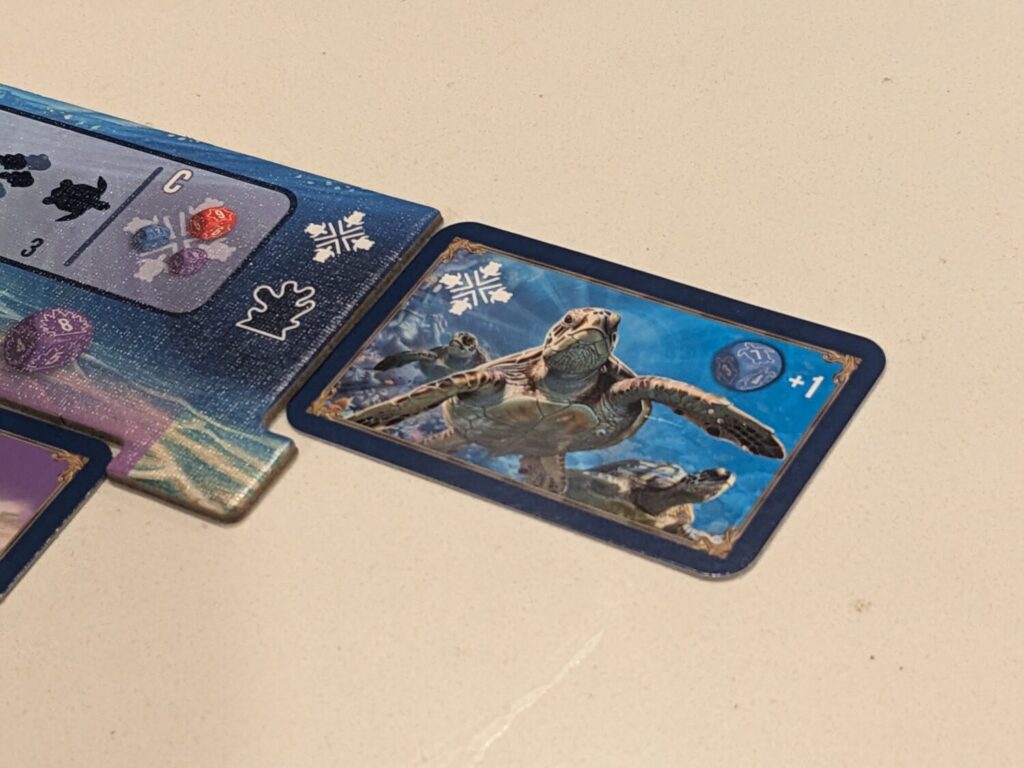
Yes, A Turtle
Australis pits 2-4 players against each other in a race to score the most points. In my experience, you are going to score at least 100 points no matter what you end up doing. That’s because the scoring system is tied to a dice draft that always has something reasonably interesting on offer.
On a turn, a player must choose one of the available dice from a pool across four actions. You can take fish, which will be organized into schools at the end of the round to score points based on your progress on the food track. You can take cards that are slotted into a player’s action engine, aligned to the four dice actions. You can drop coral tokens into one of six different areas, which will score area majority points at the end of each round. Or you could simply move your turtle forward on a special track 2-7 spaces forward.
There’s a fifth die, a big shiny red sucker, that doesn’t align to any of the four actions, but is valuable at the end of each round when…well, when there’s a dance-off conducted via dice. We’ll come back to this.
The four main actions are fine. They are not complicated, so my eight-year-old was able to make fast decisions based on his current needs. Because the dice are rolled then established in the dice pool to start a round, players have a good sense of whether a die will be worthwhile or worthless pretty early on. Because the turtle track both scores points based on position, and is the game’s main tiebreaker, everyone has to take the turtle action from time to time. Getting cards is good, and many of the die faces grant both actions and instant points.
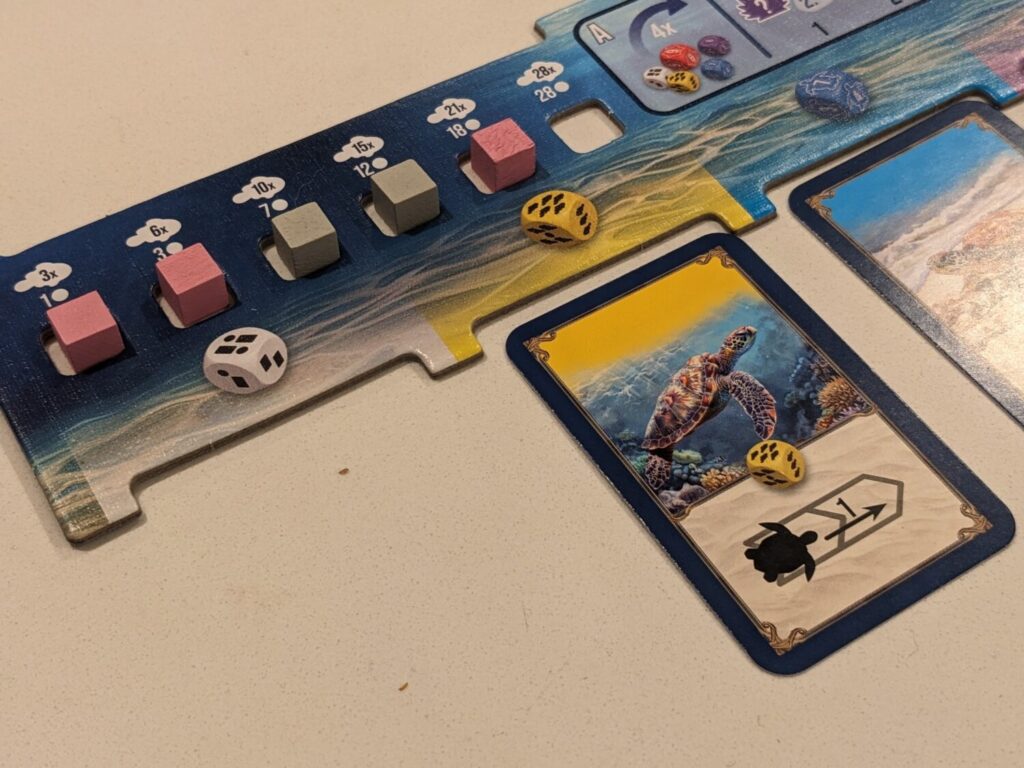
My findings? You’re going to take all the actions eventually, so while I felt like I had choices on a turn, I usually found myself taking the most attractive die to all players on each turn. I’m never turning down two cards and two points. If I can move my turtle seven spaces, I’m going to do it. If I can snag a die that will guarantee an area majority for a particular round, I’m doing it. And I found that opponents would usually do the same thing. (There was an occasional exception to this, usually late in games where I had a solid card engine in a particular die type. Even if the die result was garbage, using it to run my engine made sense.)
Where things get a little spicy is at the end of the round. Players score points for coral area majorities, schools of fish, and their position on the turtle track. Then, they roll any dice that have numbers on them (card dice and fish dice don’t), and for each set of rolls, the player who rolled lowest loses a die. This continues until one player is left standing, which gives them a larger point bonus reward, and second place gets a little bump in points as well.
This is where that big red die comes in; it’s worthless for actions, but it does guarantee playing first in the next round and the die value ranges from 2-9, so it has a higher pip potential when dice are compared in the dice dance-off. (No, there is no actually dancing required by playing Australis. Still, I think it sounds more interesting to say “dice dance-off”, and I know you agree.)
Rolling dice is fun, and the random nature of who might score 7-15 points at the end of each round did make things interesting, even if I found that this meant an overall winner of games of Australis might credit luck for their win more than strategic planning.
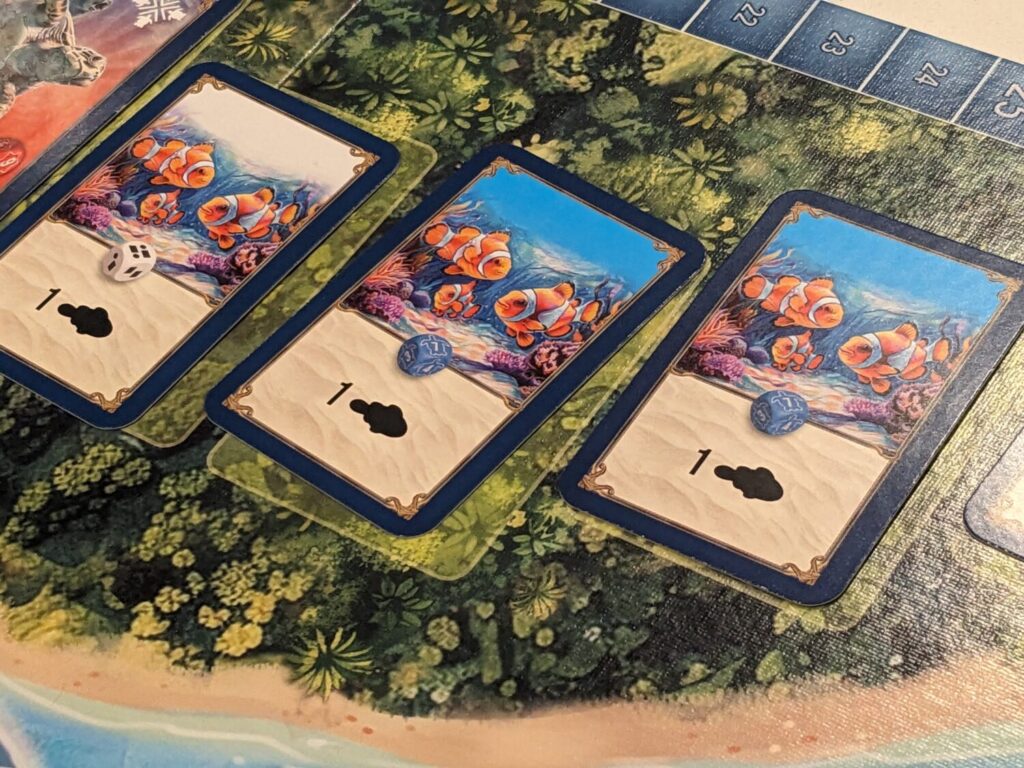
Safe, Not Spectacular
The design from Colovini and Zucchini really left me wanting.
I like that my kids can join me to play this game. But it just feels like everyone has a chance to score about the same number of points because even younger players can suss out the best possible action on a turn. Chucking dice is fun, but feeling like you made meaningful choices is more interesting. As a result, Australis felt very much “on rails”, where games always played out the same way.
For a single play, that was fine. But after my first two-player game with my wife, she wasn’t exactly looking to run it back. That game ended with me winning 137-136. I won the last two rounds on die rolls, which ultimately won me the game. Neither of us were thrilled with the outcome.
The cards that can be slotted into a player’s engine are very plain. There are only four types, and only four die colors, so placing cards into the engine never felt truly thrilling. A fifth card type bumps up the value of a die during the end-of-round dice chucking, but you can’t stack that power, so the best you can do is add +1 pips to a rolled die, based on its color.
End-of-round goals are always the same point totals. The area majority scoring is always the same. You get the idea.
Australis was fine, elevated slightly by the ease of onboarding. But after wrapping up even my second play, I had seen all that Australis had to offer. If you are in need of an ocean-themed dice-drafting game for families, Australis is a good pick. Just don’t expect much depth at sea.


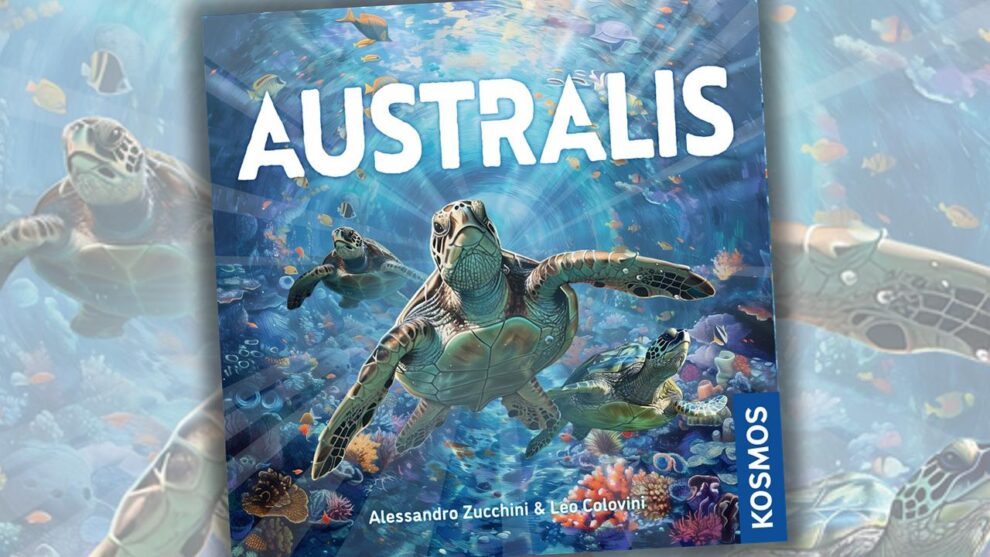


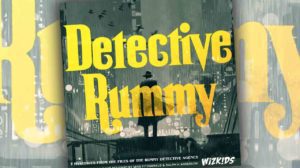

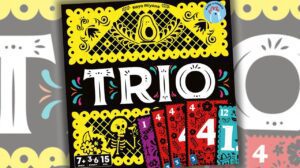




Add Comment